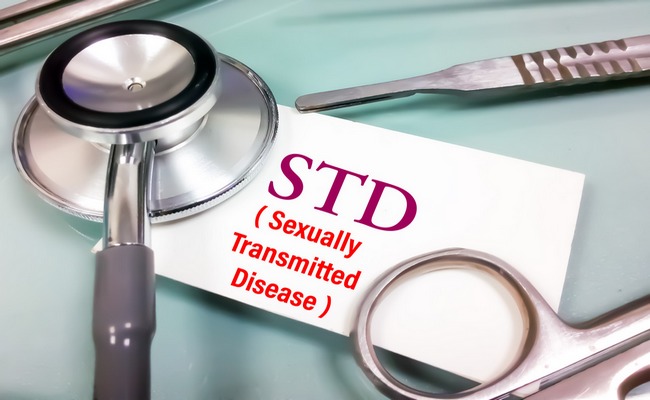Definition of Sexually Transmitted Disease (STDs):
Sexually transmitted diseases may be defined as infections acquired during heterosexual or homosexual intercourse with an infected partner. STDs are the diseases which are predominantly transmitted by/ through sexual (or intimate) contact from an infected partner.

Classification or Types of Sexually Transmitted Disease (STDs):
According to causative agent:
Group | Disease | Agent/ Pathogen |
Bacterial | Gonorrhea, PID, Urethritis | Neisseria gonorrhea |
Syphilis | Treponema palladium | |
Chancroid | Homophilus ducreyi | |
Lymphogranuloma | Chlamydia trachomatis | |
Non gonococcal urethritis | Chlamydis trachomatis and Ureaplasma urealyticum | |
Granulima Ingunali | Calymmatobacterium granulomatis | |
PID (Pelvic inflammatory disease) | Mycoplasma hominis | |
Viral
| ||
Hepatitis | HBV | |
Genital herpes | Herpes simplex virus | |
Genital warts | Papilloma virus | |
Molluscum contagosum | Molluscum contagosum | |
Fungal | Candidacies | Candida albicans |
Protozoal
| Trichomoniasis | Trichomnonas vaginalis |
Enteritis (in homosexual men) | Entamoeba histolytica or Giardia lamblia | |
Ectoparasites | Pubic pediculosis | Phythirus pubis |
Scabies | Sarcoptes scabiei |
Risk Factors of Sexually Transmitted Disease (STDs):
Anyone, who is sexually active risks exposure to a sexually transmitted infection to some degree. Factors that may increase that risk include:
1. Having unprotected sex:
Vaginal or anal penetration by an infected partner who isn’t wearing a latex condom significantly increases the risk of getting an STI. Improper or inconsistent use ‘of condoms can also increase your risk.
2. Having sexual contact with multiple partners:
The more people you have sexual contact with, the greater your risk. This is true for concurrent partners as well as monogamous consecutive relationships.
3. Having a history of STIs:
Having one STI makes it much easier for another STI to take hold.
4. Anyone forced to have sexual intercourse or sexual activity:
Dealing with rape or assault can be difficult, but it’s important to be seen as soon as possible, Screening, treatment and emotional support can be offered.
5. Abusing alcohol or using recreational drugs:
Substance abuse can inhibit your judgment, making you more willing to participate in risky behaviors.
6. Iniecting drugs:
Needle sharing spreads many serious infections, including HIV, hepatitis B and hepatitis C.
7. Being young:
Half of STDs occur in people between the ages of 15 and 24.
8. Men who request prescriptions for drugs to treat erectile dysfunction:
Men who ask their doctors for prescriptions for certain drugs such as sildenafil (Viagra), tadalafil (Cialis) and vardenafil (Levitra) have higher rates of STIs. Be sure you are up to date on safe sex practices if you ask your doctor for one of these medications.

Maria Khatun Mona is a Founder and Editor of Nursing Exercise Blog. She is a Nursing and Midwifery Expert. Currently she is working as a Registered Nurse at Evercare Hospital, Dhaka, Bangladesh. She has great passion in writing different articles on Nursing and Midwifery. Mail her at “maria.mona023@gmail.com”
